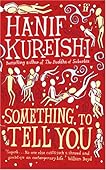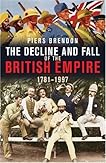 |
| A bit of inspiration from, of all people, Rod Stewart |
Recently, I accepted an assignment to write a video script for a very large, very blue-chip firm. As such things go, it was a plum assignment in reputation terms – and the money was pretty good, too. Besides, I have a bit of a history with this particular firm, and their asking me to do this was a sort of vote of confidence on their part. Of course, all this desirability meant the assignment put a lot of pressure on me, and in my present semi-retired condition I have grown unaccustomed to pressure.
I nearly cracked under it.
For many days I tossed the problem about in my head, trying to think of a thematic approach that would be different from the hundreds of other dull, boastful videos that infest this particular corporate genre. I had a few ideas, hardly better than clichés. Nothing worth sitting down at a keyboard for. And as the deadline grew closer my procrastination grew more obsessive and desperate.
Three days ago the deadline went whizzing by, making that sound the late Douglas Adams used to like so much. I must admit it’s a sound I hate. The only sound more hateful to my ear is the tone I hear my voice assume when I call up a client to beg for more time to complete an assignment. Which, of course, is what I had to do. I must say they were pretty decent about it.
Yesterday evening, after yet another pointless day spent idly surfing the internet while the tide of suppressed panic rose higher and higher within me, I decided, ‘to hell with this. I’ve been mooching around for days trying to do this and it’s just not working out. I’m going out to get drunk.’
Well, I didn’t really get drunk. I went and visited my good friend Mr. Mountain, drank some of his generously-offered twelve-year-old single-malt Scotch whisky, shot the breeze with him and his lissome fiancée for a couple of hoarse and forgot all about the assignment. I didn’t even think about it after I got home – though I was aware, all too aware, that in sixteen hours or so my extra time would run out.
In the shower before retiring, still mellow from the whisky, I found myself humming Rod Stewart’s Do Ya Think I’m Sexy. Now, this was odd: it isn’t a song I like (indeed, it is a song I loathe) and I had cause to wonder why it should have popped unbidden into my head. But I didn’t think about it very hard, and ten minutes later, I was sound asleep.
This morning, while lying in bed half-awake counting cats (they silently foregather in their numbers at the foot at my mattress during the wee hours), I suddenly realized that the solution to my creative problem was sitting fully formed in my head. I could hardly believe it, but a little interior scanning and rewinding told me I pretty much had the whole damn’ shooting-script, complete with soundtrack.
The concept involved the extensive use of tabletop models, judiciously mixed with CGI. I can’t tell you any more about it for reasons of client confidentiality. It’s not a terribly original idea, of course, but it happens to be spot-on for this job. I had a winner! Leaping out of bed, scattering cats broadcast, I dashed downstairs to my computer. Six hours of intense labour ensued, at the end of which the script was complete and on its way to the client.
Now, so far, there is nothing particularly weird about this story. Creative people often sleep on a problem and find a solution to hand next morning. The weird part begins... with that Rod Stewart tune.
Here is a little-known fact about Mr. Stewart: he is an enthusiastic and highly accomplished builder of model railway layouts. In fact, his Three Rivers City layout is famous among the railway modelling fraternity. It really is brilliant, and exquisitely detailed. Of course, Rod can afford the best, but then, he makes a lot of the stuff himself, by hand, and the results are very impressive to say the least.
But never mind all that: the point is that I went to bed humming a Rod Stewart tune, and woke up in the morning with a solution to my problem based on Rod Stewart’s hobby. Obviously, the solution had already begun forming in my unconscious mind, all unbeknownst to me, the previous day.
Or, perhaps, earlier than that. As the morning wore on and my fingers wore down from typing, other sources of inspiration began to identify themselves. I recalled that, two days earlier, a friend had emailed me a YouTube video of an amazingly elaborate model airport made by some guy in Germany. And about the same time, I remember explaining to my girlfriend what ClayMation was.
So you see, the solution had been putting itself together in my mind for days, always somewhere below the threshold of conscious reasoning, while my conscious brain fretted and despaired and engaged in what seemed at the time to be near-continuous neurotic displacement activity.
I wonder if the agony was an essential part of the process.
Of course, this kind of experience is far from unique. Other people report similar occurrences and I’ve had a few epiphanies myself over the thirty years I’ve spent writing things for a living. But this was the first time I’d discerned the action of unconscious creativity even as it was being deployed. It’s far more common, for me at least, to see it in retrospect: to read something I wrote months or years ago and discern, for the first time, how it connected with my life or state of mind at the time of writing. Today, I experienced it in real time
Eldritch stuff, I tell you. If anyone has had any experiences of a similar nature, I would love to hear about them. Post them as comments below, anonymously if you feel more comfortable that way.
Oh, and before I forget: a merry Christmas and a happy New Year to all who read this.

















